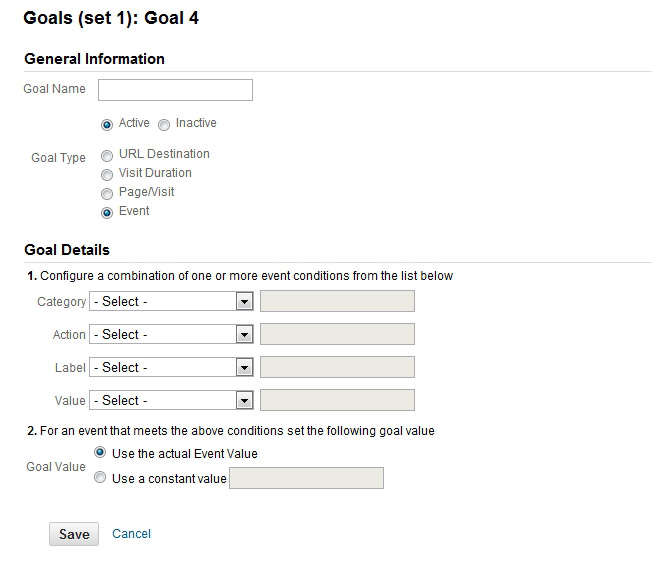What Data Is Google Analytics Goals Unable to Track: A Total Guide
Wiki Article
Unveiling the Blind Spots: Comprehending What Google Analytics Goals Can not Determine
In the world of electronic analytics, Google Analytics stands as an effective device for monitoring and analyzing online user interactions. However, amidst its robust capabilities, there exist dead spots that often evade measurement. Understanding what Google Analytics objectives can not measure is vital for obtaining a comprehensive view of user behavior and interaction. As we dive right into the intricacies of these unseen areas, we uncover a complex internet of uncharted areas that hold useful understandings into individual actions and motivations, challenging conventional knowledge and clarifying the restrictions of our data-driven understanding.User Actions on External Operatings Systems
Comprehending how customers engage on external systems is essential for maximizing online strategies. External platforms, such as social media networks, reference web sites, and online forums, play a significant function in driving website traffic to a company's web site. By analyzing individual actions on these platforms, organizations can get beneficial insights right into the effectiveness of their advertising initiatives and the preferences of their target market.One key element of customer behavior on outside systems is the referral source. By tracking where the customers are originating from, companies can determine which systems are driving one of the most traffic to their website. This info can assist firms assign their sources extra efficiently, concentrating on the systems that yield the finest outcomes.

Offline Interactions and conversions
Examining customer behavior on outside platforms supplies beneficial insights into on-line methods; nonetheless, thinking about offline conversions and communications is similarly crucial for a thorough understanding of a business's total efficiency. While Google Analytics stands out at tracking on the internet communications, it drops brief in recording the full client journey that typically includes offline touchpoints. Offline conversions, such as in-store purchases or phone questions, play a substantial duty in numerous companies' success. Ignoring these communications can lead to a distorted view of the performance of advertising and marketing campaigns and overall business efficiency.
Attribution Beyond Last Click
When diving right into the realm of digital marketing analytics, it ends up being necessary to look past the single touchpoint of the visit this web-site last click for a much more comprehensive understanding of acknowledgment. While Google Analytics gives valuable insights right into customer behavior, depending only on last-click attribution can be restricting - what data is google analytics goals unable to track. Acknowledgment models that exceed the last click provide a more nuanced view of the client trip, considering all the touchpoints that cause a conversionAcknowledgment past the last click allows marketing experts to appoint credit score to various interactions along the conversion path, giving a more clear image of the performance of various advertising channels. By exploring multi-touch acknowledgment designs such as direct, time decay, or position-based acknowledgment, services can better allocate their marketing spending plans and enhance their techniques for optimal effect.
Comprehending the influence of each touchpoint in the conversion procedure is important for making informed choices and optimizing ROI. By accepting acknowledgment past the last click, businesses can obtain deeper understandings right into customer actions and tailor their marketing initiatives much more properly.
Cross-Device and Cross-Browser Tracking

In a similar way, cross-browser tracking matches cross-device monitoring by capturing customer actions as they switch between different web internet browsers. Comprehending just how individuals connect with websites on numerous browsers can help marketing experts optimize their online experiences to ensure consistency and capability throughout various systems.
Qualitative Information and Customer Intent
Recognizing user intent through qualitative data analysis is important for establishing targeted electronic advertising and marketing approaches that reverberate with the requirements and choices of the target market. Qualitative information supplies understandings right into the 'why' behind individual actions, dropping light on inspirations, feelings, and choices that quantitative data alone can not catch. By evaluating individual comments, remarks, and interactions, marketing experts can reveal valuable information about user intent, allowing them to tailor their messaging, content, and offerings to better line up with what their audience is seeking.Qualitative information also helps in understanding the context in which users engage with a website or app. This contextual understanding enables marketers to develop even more appropriate and customized experiences, ultimately driving greater involvement and conversion rates. By delving right into individual intent through qualitative information evaluation, businesses can gain a much deeper understanding of their target market, causing much more effective advertising and marketing methods that meet customers' expectations and demands.
Verdict
In final thought, Google Analytics goals have limitations in gauging individual actions on outside platforms, offline conversions, check my reference acknowledgment beyond last click, cross-browser and cross-device monitoring, and qualitative data associated with customer intent. what data is google analytics goals unable to track. It is crucial for companies to be familiar with these blind places in order to supplement their data evaluation with other devices and techniques to gain a much more comprehensive understanding of their target market and enhance their overall digital see advertising and marketing methodsBy assessing user actions on these platforms, businesses can obtain important understandings right into the efficiency of their advertising and marketing initiatives and the choices of their target audience.
Examining customer habits on exterior platforms offers useful insights into online techniques; nevertheless, considering offline conversions and interactions is similarly imperative for an extensive understanding of a business's general performance.In digital advertising analytics, moving beyond last-click attribution to check out cross-device and cross-browser tracking is necessary for obtaining a holistic understanding of individual communications throughout different platforms and gadgets. By examining customer responses, remarks, and communications, marketing professionals can reveal valuable information about individual intent, enabling them to tailor their messaging, material, and offerings to much better straighten with what their audience is seeking.
By delving into individual intent through qualitative data analysis, organizations can get a much deeper understanding of their target audience, leading to extra effective advertising and marketing strategies that satisfy customers' expectations and requirements.
Report this wiki page